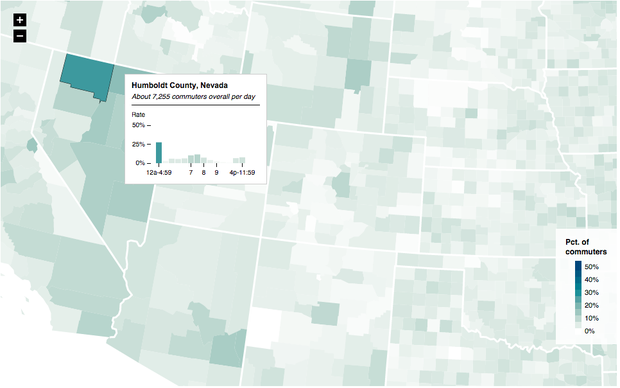In Nevada, you’re likely to leave for work between midnight and 5 a.m.

The time you decide to leave, or at least the time you should leave, obviously depends on the route you take to work and how you commute. Now, Nathan Lau of FlowingData has created a data viz that shows what time Americans stumble out their doors in every U.S. county.
In general, most people leave somewhere between 6 a.m. and 8:30 a.m, with activity really concentrated between 7 and 8 o’clock. Lau’s data show that half of all workers in many Midwest counties leave during that period, so those portions of the map (below) are much darker in this hour.
From our partners:

But Nevada presents a really weird case. People there leave any time between midnight and 5 a.m.—especially in Humbolt County, where more than quarter of all workers rise before the sun. Lau thinks the long commute times might have something to do with that. But perhaps it’s also because the state, and Humbolt County in particular, rely heavily on the mining, agriculture, and tourism? These are industries that start pretty early.

From 10 a.m. to noon, there’s a commuting silence, then things start picking up again. In Aleutians East Borough, Alaska, most workers only start walking out at 4 p.m., because the fishing industry there throws work schedules out of whack. At that time in D.C. the work day is nearly over and Happy Hour is just getting started.

This article originally appeared in CityLab.














